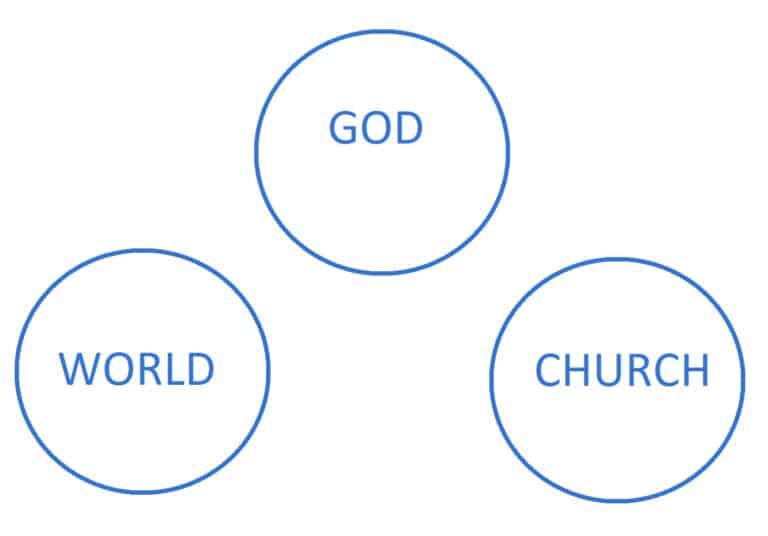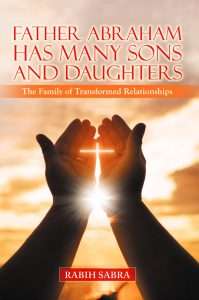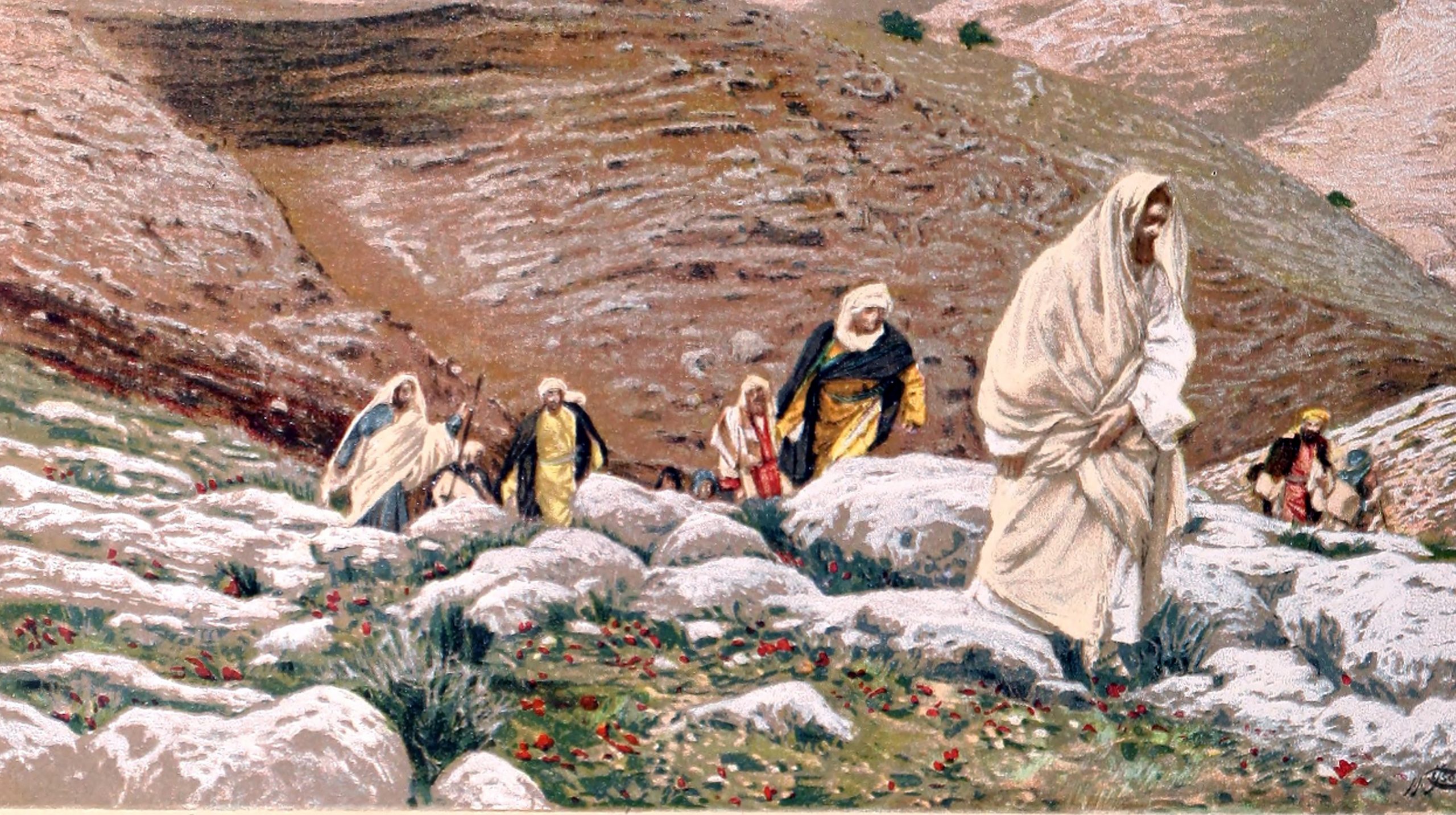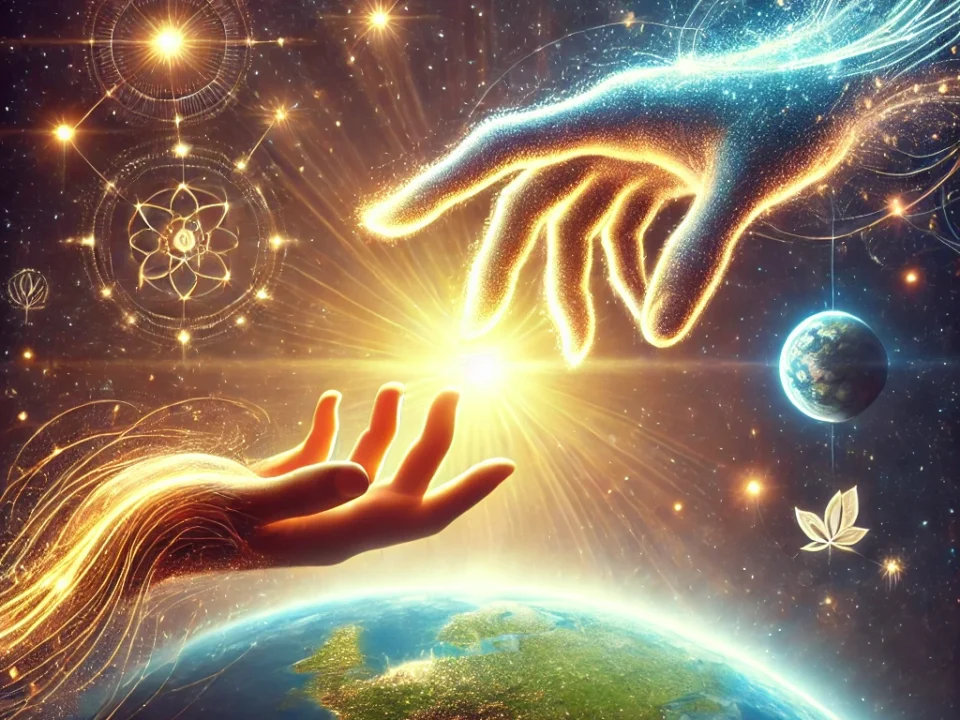
Matthew 28:18-20
November 16, 2020“God so loved the world that He gave His one and only Son, that whosoever believes in Him shall not perish but have everlasting life.” John 3:16 is probably one of the most concise summaries of the major themes in the Bible, connecting them to produce the big picture. To appreciate the big picture, we need to look at some details. The main point of the verse is to emphasize the sacrificial love of God for the World. This love is so powerful that He offered up His one and only Son, the most precious and beloved Person to Him, for the sake of the World. We cannot fully comprehend what God sees in the World that makes it so precious to Him, especially when we consider that the World does not feel the same way about God. Taking a closer look, note that there are three main characters in this verse, God (The Father and The Son), the World, and those who have everlasting life, people that other verses in the Bible call the Church. We need to understand these three characters and how they are related to each other.
DEFINITIONS
We must first identify the three characters of John 3:16. God refers to the God of Abraham of the Old Testament. The New Testament further reveals that God exists in three Persons, God the Father, God the Son, and God the Holy Spirit. In this verse, God the Father and God the Son are the sources of sacrificial love for the World. Technically, there are four characters in this verse, but I will consider that the Father and the Son are one for this article. The World is the complex system of cultures throughout history, made up of individual men and women living in communities. The Church is a subset of the world communities, made up of individuals connected by a personal relationship to Jesus Christ. If we try to illustrate John 3:16, it would be hard to figure out where to place the circles. Are they concentric? Are they overlapping? I’ve been attempting to develop an accurate and useful layout but have not succeeded so far. A more elaborate multi-dimensional model is needed.

HOW ARE THEY RELATED?
To understand John 3:16, we need to understand some background information. From Genesis to Revelation, the 66 books of the Bible tell a cohesive story that involves God, the World, and the Church. God created the World, which rebelled against Him and rejected Him, so God entered into the World to call out a subset who choose Him. Those who choose to belong to Him have eternal life, whereas those who continue to reject Him will surely perish.
God and the World
A Broken Relationship
The relationship between God and the World is broken. The World hates God. It wants to deny His existence yet is quick to blame Him for every evil or tragedy that it brings on itself. The salient features of the relationship are:
1. Separation There is a divide between God and His creation caused by rebellion against Him. God’s creation, which was initiated and made by Him and for Him, has been “hijacked” by Satan and has been corrupted so that it is no longer able to connect with God on its own. A good definition of death is separation from God. Since God alone is the source of life, when the World rejects Him, it brings death to itself. This separation between God and the World was caused by sin when it entered the World through Adam’s disobedience to God. See Isaiah 59:2 and 2 Thessalonians 1:8,9.
2. Anger - The World is angry at God; it is predisposed to blame Him and will take every opportunity to mock Him. It questions His wisdom and even his motivations in accepting worship. When God became one of us two thousand years ago, the World crucified Him. Some may wonder what kind of God would send people to hell, but the truth is that those who perish refuse to come to the source of eternal life and thus condemn themselves to an eternity of separation from God. See Luke 23:34-39.
3. Rebellion - The World is in a state of rebellion against God, rejecting Him and His authority as the sovereign ruler over all creation. The World does not acknowledge Him as the giver of life, wrongly insisting, “this is my life, and I will live it the way I want.” See Romans 8:5-8.
Reconciliation
He gave His One and only Son. God took on flesh and entered into the World. He never ceased to be God, but somehow He prepared a human body for Himself and came to live among us. This is Jesus Christ, the God-Man. Fully God and fully man, the one and only who is holy. He is unblemished by sin, neither by actions nor by inheritance. This God-Man willingly allowed the World to crucify Him without having ever committed a crime. In contrast to the World, Jesus said, “I lay down my life to do the Father’s will.” God counted His death on the cross as payment for sins on behalf of every human being..
That whosoever believes in Him shall not perish but have everlasting life. The word “whosoever” is like a magnifying lens. It focuses God’s plan of salvation for the whole World on every person, including you! Regardless of your culture, ethnicity, or creed, God is reaching out to you, saying, “believe in Jesus Christ and be reconciled to Me.” He can do this because He considered Jesus’ death on the cross to be full payment for all your sins, past, present, and future. He died on your behalf! He removed the sin that separates you from God. Instead of separation and death, you can have everlasting life. The only requirement for reconciliation to God is to believe in Jesus Christ. Believing in Him is a matter of trust, a state of the heart.
It is essential to understand that Jesus died on the cross, AND on the third day, He rose from the dead. When you join Him in death, you will join Him in resurrection too.
Love Demands A Choice
God wants you to love Him. The Great Commandment is to love the Lord your God with all your heart, and mind, and spirit. The love He desires from us has to be a choice; otherwise, it wouldn’t be love. Everyone in the World must choose to either believe in Jesus Christ or reject Him. This choice can lead to a new relationship with God.
God and the Church
The Church is all who have a relationship with God through Jesus Christ. The relationship between the Church and God is distinguished by:
1. Redemption - the community of those who believe in Jesus Christ are forever united to Him and therefore have eternal life. Their union also means that they are being transformed into the likeness of Jesus Christ, separated from sin and darkness, and growing in holiness. Finally, they have the promise to be glorified with Him at the second coming of Jesus Christ.
2. Peace - God Himself indwells those who believe in Jesus Christ. The Holy Spirit takes up residence in the believer and communicates through the Bible, guiding them into truth. The presence of God in the life of the believer gives peace and understanding.
3. Obedience - Once a person has the Spirit of God, he is able actually to obey God. Many think they must obey God to be saved, but it is the other way around.
The Church and the World
Many verses in the Bible tell us to go to the World. We are to build relationships and bridges to those around us, loving them just as God loves them. But the Bible also tells us not to love the things of the World. See 1John 2:15-17. A balanced approach to these seemingly opposite commands is to be in the World, but not of it. We are to be present with others in relationships, but we should not imitate their values or beliefs.
Believers have a role in the World, which is their platform or stage on which they model Jesus Christ, acting as channels of His love to the World.
Balance

John 3:16 is such an important verse because it shows that our faith without any one of these “characters” is off-balance.
Consider a perspective of faith based on God and the World alone, without the Church. We’d end up with an ambiguous, watered-down Gospel that pays lip service to religion but has no power in it. Eternal life given to those who believe, by God giving His one and only Son, is what gives meaning to the love of God and hope to the World. The Church is the evidence and proof of God’s love for the World.
On the other hand, consider a perspective of faith based on God and the Church alone, without the World. In this case, we end up with a self-absorbed and inward-focused group that is oblivious to the people around them. A holier-than-thou attitude isolates such a church from the Gospel of Jesus Christ, His message of salvation to the World. Also, without the World, the Church has no purpose on Earth. Someone may say, God takes care of telling the World; we need to focus on obedience and sanctification. But this misses the point because sharing the gospel with others is integral to our sanctification. It is all driven by love, the love of God, and if it is not flowing through us to the World, we will end up not sharing the gospel and not obeying His commands either. In other words, as long as we are still on Earth, we cannot be the Church without being in the World and sharing the Gospel of Jesus Christ.
Finally, consider a perspective of faith based on the Church and the World alone, without God. If you live in Europe or North America, you are probably quite familiar with this model, which focuses on love and kindness as defined by human standards. God becomes a concept invoked as a matter of convenience or the occasional need to reinforce one’s opinion. Such a message is more comfortable to peddle but has no power to save and transform people.
Biblical faith includes all three, God, the World, and the Church. Such faith enables the believer to have three perspectives on life. Putting them together helps us understand the counsel of God in the Bible.
If you benefited from this article, please share it on your social media, leave a comment, and click on the heart to like it. A Story That Will Impact Your Life Personally And Directly
A Story That Will Impact Your Life Personally And DirectlyAlthough the Church denounces the world’s depravity, it has been having a love affair with it in secret. The Church and the world have used each other to negotiate the tides of change in economics and politics. This unholy union has stained the Church’s testimony enough to cause many to question the validity of the gospel of Jesus Christ. In America, this scandalous affair has become the focal point in abortion, racism, and partisan politics.
At the heart of the Church-world relationship is the organizational design of churches patterned after business corporations and geared for growth and efficiency. But such a structure prevents the personal and social transformations at the heart of the gospel of Jesus Christ.
Father Abraham Has Many Sons and Daughters tells the story of relationships between God, His people, and the world from Abraham’s time. It demonstrates how the world has always had its tentacles deep in God’s community and how God has consistently saved a remnant for Himself. Given the destructive and enslaving power of the world, this book highlights a pathway for communities of believers to the kind of transformation that the apostle Paul wrote about in Romans 12:2, “Don’t copy the behavior and customs of this world but let God transform you into a new person by changing the way you think. Then you will learn to know God’s will for you, which is good and pleasing and perfect.” [NLT]
An essential part of the book is the emphasis on relationships, as outlined in Complexity Theory studies. Individual attributes and capacities are essential, but complex behaviors are driven more by relationships. I apply this understanding of network theory and complex systems to discipleship and transformation in the Church.
Testimonial
My earliest association with the term “transformation” was when as a 10-yeard old I memorized Romans 12:1-2 in Sunday school. Even though I could not have explained what “transformation” meant, I found it intriguing and dynamic. It helped me begin to understand that conversion was life-changing and called for reorientation from self-centeredness to becoming God-centered. Over the years the various dimensions of transformation have enriched and filled out my understanding. Father Abraham Has Many Sons and Daughters expands, deepens, and challenges us to embrace this dynamic concept.
In Father Abraham Has Many Sons and Daughters, Dr. Rabih Sabra puts the concept of transformation in a broader and richer context by using it to describe the Body of Jesus Christ, as a family of transformed relationships. As a member of the thousand-year-old Druze community in Lebanon, God has used him to lead in establishing the first church among this people group. The Access Team initiative has introduced and cultivated multi-dimensional transformation that is personal, social, spiritual, and communal. I can think of no place on Planet Earth where this ministry of transformation is not urgently needed.
Wilbert R. Shenk Professor Emeritus School of Intercultural Studies Fuller Theological Seminary Pasadena, California




